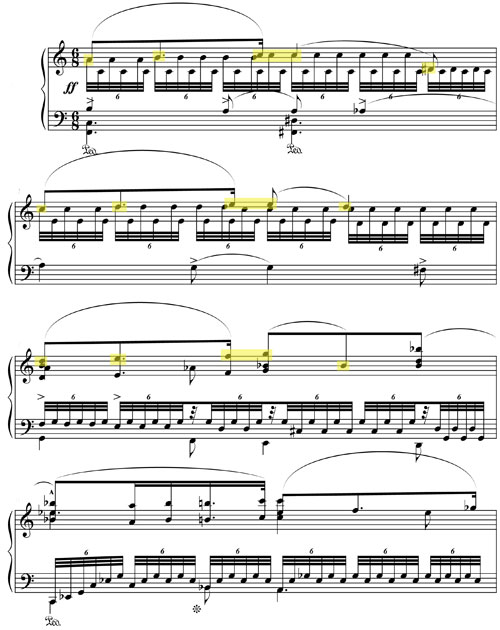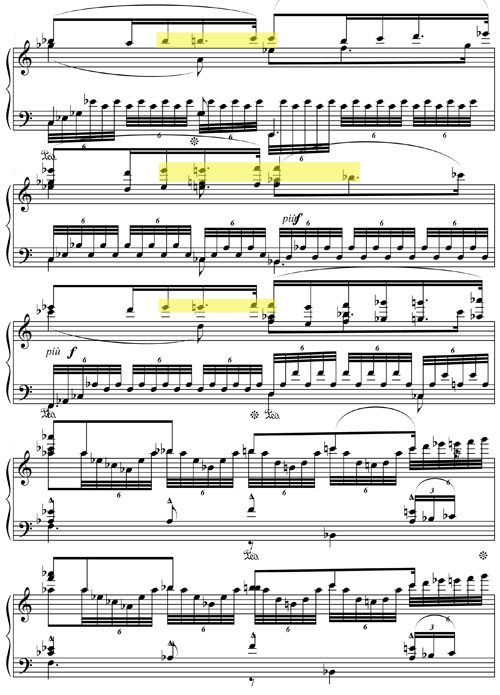







Tristan and Isolde prelude (pt. 4)
The climax of the prelude comes in mm. 74-83 where the desire music and glance music merge. Chafe, quotiing Wagner, characterizes the prelude as
'one long-articulated impulse' involving a string of antitheses––hopes/fears, laments/wishes, raptures/torments––within its basic dynamic pattern of a series of 'attainments,' each followed by languishing back to renewed desire. The goal of these tension/relapse cycles––the climax of the prelude––represents the lovers' 'most powerful effort' to find the breach [Durchbruch] that will reveal the path to endless love (100).
As the glance motive, especially its rhythm, is so important in the prelude, so too is it important throughout the opera, e.g. when they wake up from the effects of drinking the love potion they sing each other's names to the glance music. And Tristan dies toward the end of Act III to the beginning of the glance music as he sings Isolde's name. Wagner connected compassion and the glance, as Chafe writes: "The glance, representing the primacy of the internal over the external, was thereby universalized to the level of 'active participation [Mitleid] in the world's suffering'" (105). Here then is the climax of the prelude:




